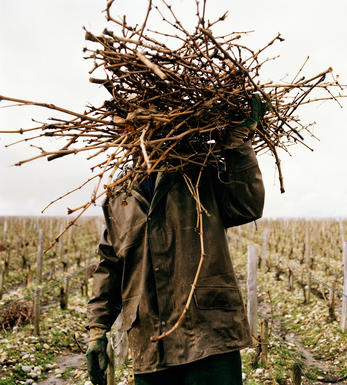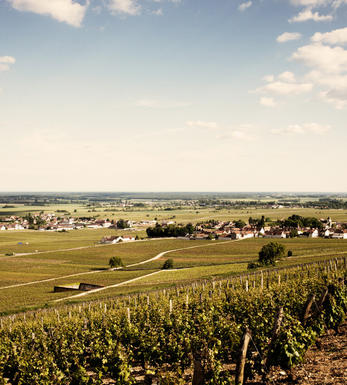
About this WINE

Domaine des Gerbeaux
The wine Domaine des Gerbeaux is owned and run by wife/husband team of Beatrice (who heralds from nearby Chaintre) and Jean-Michel Drouin, who since 1979 has developed the domaine originated by his grandfather in 1896. They have now been joined by their son Xavier.
Jean-Michel produces some of the best and most distinctive wines in the Mâconnais region. In typically Burgundian style, he has small parcels of vines (over 40) spread around in Mâcon, St. Véran and Pouilly-Fuissé.
The wines are fermented in stainless steel tanks, enamel vats (to maxmise the contact with the lees) or wooden barrels depending on their nature. The wines are superb and Jean-Michel is in the envious position of knowing that every bottle is sold before it is bottled. In particular, his Pouilly-Fuissé Vieilles Vignes is outstanding, with richness, finesse and perfect integration between fruit and oak. The St Véran wine comes from the village of Davayé, from a vineyard immediately adjacent to Pouilly Fuissé. Berry Bros & Rudd take the entire crop of this cuvee every year.

Saint-Véran
Saint-Véran is the southernmost appellation of the Mâconnais region of Burgundy, and consists of two areas, divided by the lands of Pouilly-Fuissé, that produce a dry white wine. Named after the town of Saint-Vérand which is included inside its jurisdiction, an administrative error in 1971, the year of the formation of the AOC, meant that Saint-Véran lost the‘d’ at the end of its name.
Saint-Véran produces both white and red wines, but due to its unique position as the most southern appellation of Burgundy, it technically overlaps into the northern boundary of Beaujolais, meaning that some of its communes produce reds to be sold as Beaujolais Cru, but whites to be sold as Burgundian, due to the inferred superiority over the more generic Beaujolais Blanc AOC.
Saint-Véran whites are generally well-regarded amongst the wine community, indeed their qualities were realised prior to its official classification as an appellation in 1971 by many aficionados.
They are all made from Chardonnay variety in the customary Burgundy fashion, but are known to be slightly more full-bodied than other varieties of white Burgundy. Notable changes occur during aging: Saint-Véran whites go from a floral and fruity youth to a nuttier and honeyed maturity. As with many wines from the Mâconnais region they also often display notes of minerality, something which is greatly desired.

Chardonnay
Chardonnay is often seen as the king of white wine grapes and one of the most widely planted in the world It is suited to a wide variety of soils, though it excels in soils with a high limestone content as found in Champagne, Chablis, and the Côte D`Or.
Burgundy is Chardonnay's spiritual home and the best White Burgundies are dry, rich, honeyed wines with marvellous poise, elegance and balance. They are unquestionably the finest dry white wines in the world. Chardonnay plays a crucial role in the Champagne blend, providing structure and finesse, and is the sole grape in Blanc de Blancs.
It is quantitatively important in California and Australia, is widely planted in Chile and South Africa, and is the second most widely planted grape in New Zealand. In warm climates Chardonnay has a tendency to develop very high sugar levels during the final stages of ripening and this can occur at the expense of acidity. Late picking is a common problem and can result in blowsy and flabby wines that lack structure and definition.
Recently in the New World, we have seen a move towards more elegant, better- balanced and less oak-driven Chardonnays, and this is to be welcomed.



Buying options
Add to wishlist
Description
Full of juicy fruit with floral notes, this exuberant, zesty yet still fine-boned St Véran is perfectly balanced, offering plenty of energy for the future.
Jasper Morris MW, Burgundy Wine Director
wine at a glance
Delivery and quality guarantee